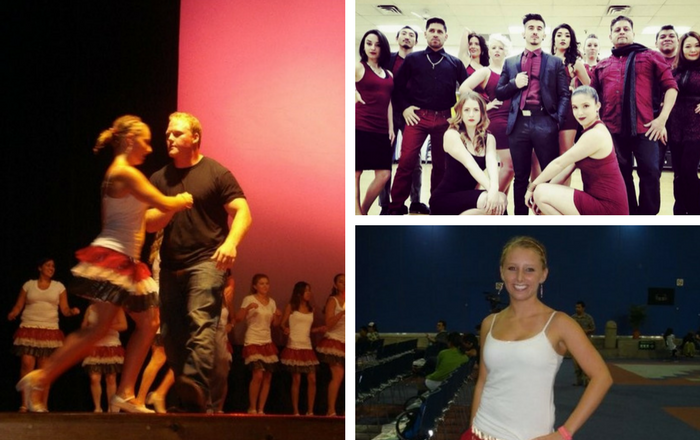Teacher's Lounge: Courtney DeAnda

In 2012, Courtney DeAnda was involved in a terrible ski accident which resulted in a traumatic brain injury. As she recovered, she had to re-learn even simple tasks like walking and talking.
After a year of physical therapy, DeAnda said she still struggled with balance at times. And she wondered if she would ever get to enjoy her passion for dancing again.
Turns out, dancing was just what she needed. It helped her regain coordination and balance, and she’s even progressed to salsa and bachata performances at major events in and around Denver.
 “It was really scary to jump back into dancing,” DeAnda, a Spanish teacher at DSST: Cole High School. “But dance for me is like freedom. It brings me so much joy and gives me life. People ask me, ‘How can you go out on a school night, get in at midnight, then get here at 6 a.m. and be so perky?’ It’s because dancing gives me life.”
“It was really scary to jump back into dancing,” DeAnda, a Spanish teacher at DSST: Cole High School. “But dance for me is like freedom. It brings me so much joy and gives me life. People ask me, ‘How can you go out on a school night, get in at midnight, then get here at 6 a.m. and be so perky?’ It’s because dancing gives me life.”
DeAnda got her first taste of dancing when she was studying abroad in Guadalajara, Mexico, and signed up for a dance class. One of her first partners? The man who would later become her husband.
As she grew more confident in her own dancing, DeAnda said she began attending weekend-long dance events called a “congress.” There, she learned even more and began performing in front of large crowds with a local women’s salsa dance group.
Then, in 2015, she was involved in a car accident and sustained a concussion. After she recovered, she was worried how it would affect her ability to dance, but she decided to forge ahead.
“It was so scary,” DeAnda said. “The first night (I tried dancing), I stayed for maybe 10 minutes because the moving lights affected my balance. But I went back and took lessons. Dance helps with memory and helps with Alzheimer’s. So it’s helped with my memory and balance. And being on a team that’s not competitive, it’s a lot more chill. I had all these strong women around me who were so supportive of me and helped me with my recovery.”
While dance has helped DeAnda with physical rehabilitation, she said it can also benefit others. She encourages anyone interested in dance to try it by going to lessons and exploring the benefits, which extend beyond mental and physical for DeAnda .
“Communication is so important,” she said. “Anyone can lead or follow. But even then, you have to communicate with who you’re dancing with. When you’re learning, they could hurt you if they do something wrong, so you have to communicate with them, even if it’s a tough or awkward conversation to let them know.”
